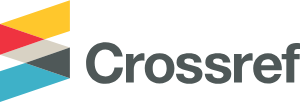Abstract
Corrosion leads to global economic losses exceeding $2.5 trillion annually and accounts for up to 30% of infrastructure failures. Conventional corrosion inhibitors face limitations such as aquatic toxicity (LC50 <100 mg/L), moderate efficiencies (65–82%), and poor long-term durability (<500 hours). This review critically evaluates hybrid organic–inorganic corrosion inhibitors, focusing on their composition, mechanisms, performance metrics, and eco-safety. Hybrid systems comprising organic molecules integrated with inorganic matrices like sol–gel networks, nanocomposites, and layered double hydroxides (LDHs) demonstrate enhanced functionality through barrier effects, self-healing, and controlled release. These materials achieve inhibition efficiencies of 88–98.5%, outperforming conventional systems by 18–35%. Sol–gel coatings protect carbon steel at 92–98% efficiency in 3.5% NaCl, while LDHs sustain 94–97% protection over 1200–1500 hours. Nanocomposites reduce corrosion rates from 0.95 mm/year to 0.002–0.004 mm/year. Electrochemical techniques (EIS, PDP) show increased charge transfer resistance (500–2500 Ω·cm2) and coating resistance up to 108 Ω·cm2. Surface analysis reveals smoother films (Ra = 15–35 nm), higher contact angles (95–125°), and adhesion strengths of 12–18 MPa. Case studies report 90–96% protection in marine settings, 88–94% in acidic media, and over 92% under atmospheric conditions. Durability tests confirm >90% efficiency after 1000 hours, significantly higher than the <60% for conventional coatings. Overall, hybrid inhibitors offer a high-performance, eco-conscious alternative for corrosion control, combining efficiency, environmental safety, and scalability. Their superior metrics and adaptability position them as next-generation solutions for diverse industrial applications.
Recommended Citation
Luaibi, Hasan M. and Al-Tweel, Saja S.
(2025)
"Hybrid Organic–Inorganic Corrosion Inhibitors: Bridging Performance and Eco-Safety,"
AUIQ Technical Engineering Science: Vol. 2:
Iss.
2, Article 9.
DOI: https://doi.org/10.70645/3078-3437.1038













Follow us: